Blue Damselfish - Chromis chromis
In this video

Meeting these little blue fish is always a good sight. We filmed them many times, but we will never tire of admiring the beautiful electric blue color of their youthful livery.
Blue Damselfish Chromis chromis Castagnola nera intotheblue.it
It is the Mediterranean Damselfish, Chromis chromis, a very common fish from the Mediterranean. It populates practically any type of seabed within thirty meters of depth. In spring and summer it reproduces, and the small fry have this characteristic of having an intense electric blue color.

The young specimens live in flocks of many individuals and inhabit the caves of the rocky seabed where they can shelter, in case of attack, from predators. Growing up they abandon the blue livery to become black and live in open water in flocks of numerous individuals.
We film these fish to show how even the Mediterranean is able to amaze us with colorful fish, like coral reefs, which can be seen simply by snorkeling with a mask and snorkel. At a certain point in the video you can also see the Thalassoma Pavo (Donzella pavonina), a labridae which is also quite common in our seas and one of the most colorful fish in the Mediterranean.

Distribution and habitat
Blu Damselfish Chromis Chromis is widespread in the Mediterranean (where it is very common) and in the eastern Atlantic between Portugal and the Gulf of Guinea (more rarely up to Angola).
It populates the shallow rocky seabed where it lives in banks scattered in mid-water. They are also found above the Posidonia oceanica meadows. The small specimens still with the blue livery are photophobic and are often encountered in caves, crevasses and other shaded environments.

Description
It has an oval, flattened body with a small mouth and large eyes. The dorsal fin is unique, with anterior spinous rays and longer soft rays posteriorly, the anal fin has only two spiny rays followed by many soft ones. The caudal fin is notched in the center and has two pointed lobes. The upper and lower rays of this fin are darker than the rest, giving the impression of a more etched tail than it actually is. The ventral fins and the pectoral fins are quite developed. The flakes are large. Castagnola nera Chromis chromis Damselfish intotheblue.it

The juveniles have an electric blue color, while the adult specimens gradually lose it with the growth to become dark brown or blackish with longitudinal rows of lighter spots on the sides. The coloring can vary: the males in the scrub are very dark while at night the adults pale.
It reaches a maximum length of 16 centimeters but is usually much smaller.
Reproduction and behavior The reproduction takes place in summer, the male performs a wedding dance to convince the female to go to the part of the seabed that will act as a nest. There the deposition takes place for about 10 minutes after which the female is immediately chased away. The eggs are not floating but stick to the substrate thanks to the adhesive filaments with which they are equipped and are actively defended and oxygenated by the male.
https://it.wikipedia.org/wiki/Chromis_chromis
https://en.wikipedia.org/wiki/Chromis_chromis















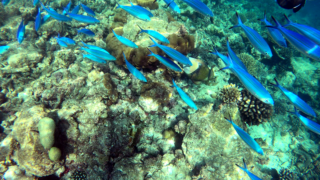

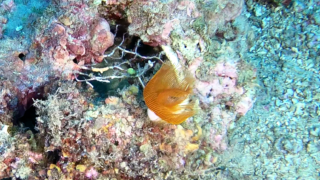
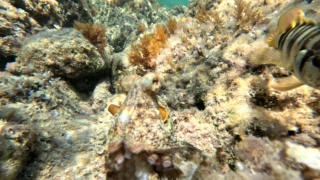
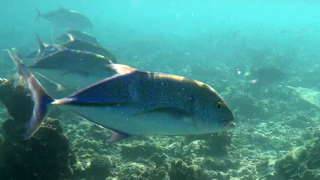

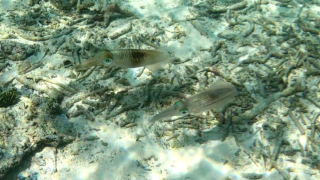

You must be logged in to post a comment.